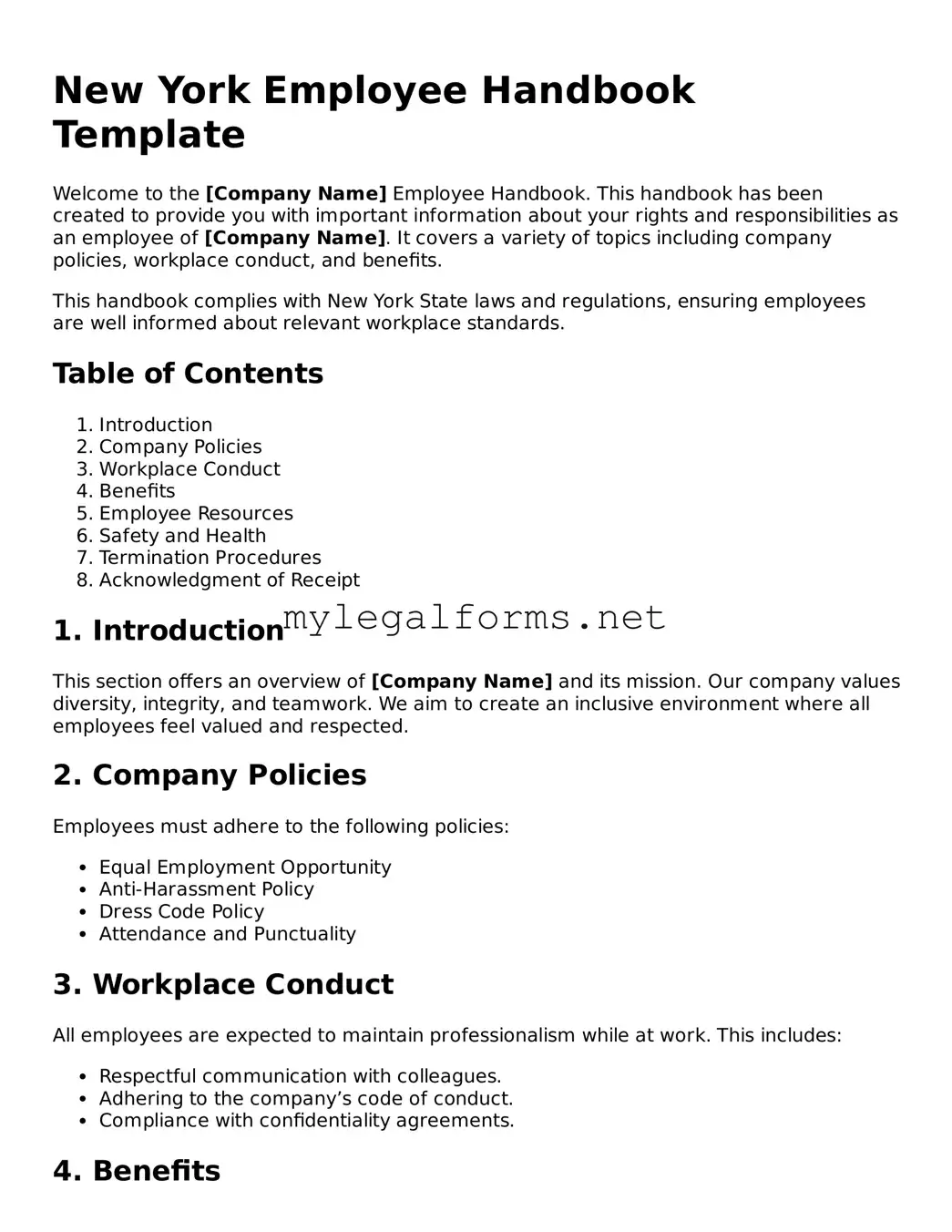New York Employee Handbook Template
Welcome to the [Company Name] Employee Handbook. This handbook has been created to provide you with important information about your rights and responsibilities as an employee of [Company Name]. It covers a variety of topics including company policies, workplace conduct, and benefits.
This handbook complies with New York State laws and regulations, ensuring employees are well informed about relevant workplace standards.
Table of Contents
- Introduction
- Company Policies
- Workplace Conduct
- Benefits
- Employee Resources
- Safety and Health
- Termination Procedures
- Acknowledgment of Receipt
1. Introduction
This section offers an overview of [Company Name] and its mission. Our company values diversity, integrity, and teamwork. We aim to create an inclusive environment where all employees feel valued and respected.
2. Company Policies
Employees must adhere to the following policies:
- Equal Employment Opportunity
- Anti-Harassment Policy
- Dress Code Policy
- Attendance and Punctuality
3. Workplace Conduct
All employees are expected to maintain professionalism while at work. This includes:
- Respectful communication with colleagues.
- Adhering to the company’s code of conduct.
- Compliance with confidentiality agreements.
4. Benefits
The following benefits are available to employees of [Company Name]:
- Health Insurance
- Retirement Savings Plan
- Paid Time Off
5. Employee Resources
Employees can access various resources throughout their employment. These include:
- Human Resources Department
- Employee Assistance Program
- Training and Development Opportunities
6. Safety and Health
The safety of our employees is a top priority. We encourage all team members to:
- Report any hazardous conditions.
- Participate in safety training sessions.
- Follow emergency procedures.
7. Termination Procedures
In the event of termination, employees will be informed about the following procedures:
- Final paycheck distribution.
- Return of company property.
- Exit interviews.
8. Acknowledgment of Receipt
Please sign below to acknowledge that you have received and reviewed this handbook.
Employee Name: [Employee Name]
Signature: ___________________________ Date: ___________________
